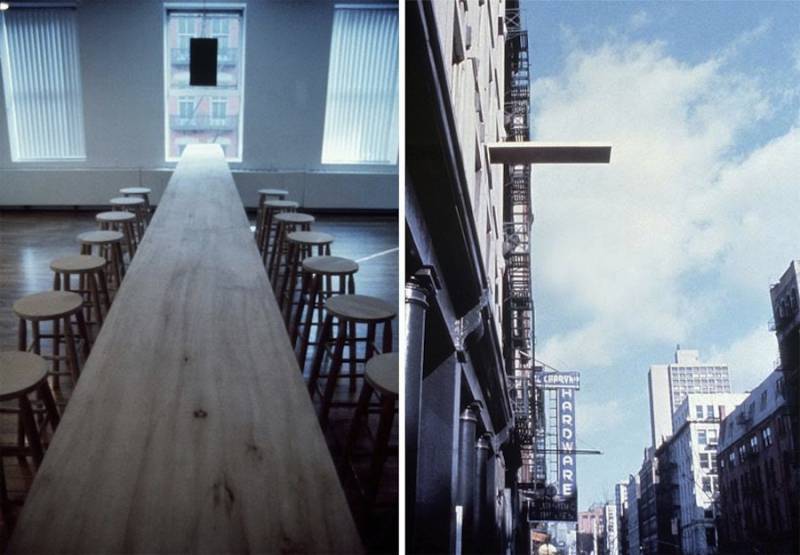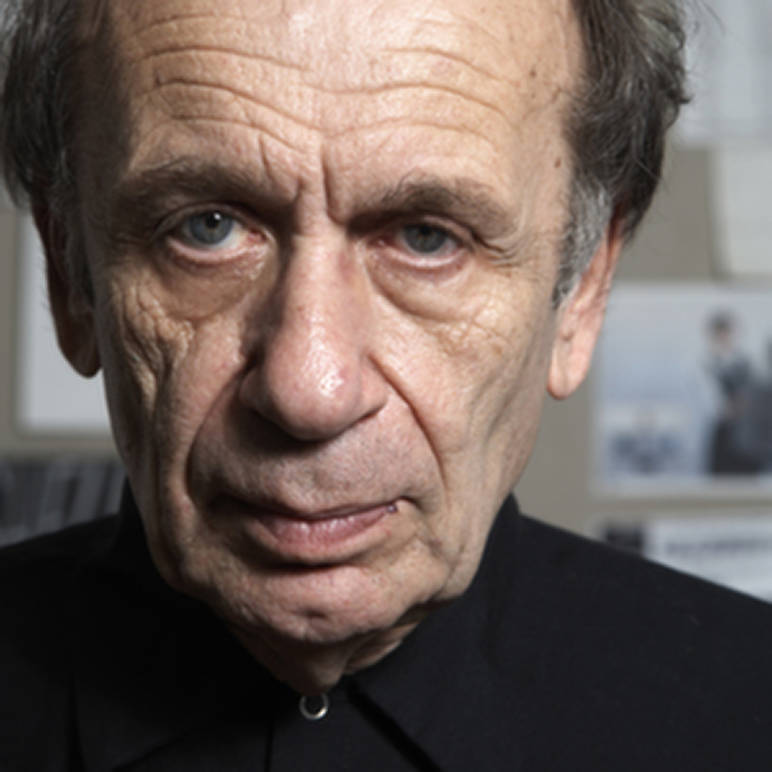Odd and Bizarre, Vito Acconci’s Impactful Retrospective
The eccentric and pervasive artist, Vito Acconci, returns with Vito Acconci: Where We Are Now (Who Are We Anyway?), 1976, his first retrospective in the United States in more than thirty years. Part of the institution’s 40th anniversary celebration, MoMA PS1 presents an array of Acconci’s early works to show the energy of the decade that preceded the museum’s founding in 1976.
Located in Long Island City, Queens, MoMA PS1 is one of the oldest and largest nonprofit
contemporary art institutions in the country. The institution designates its resources to displaying “the most experimental art in the world”, which Vito Acconci’s newest exhibition definitely qualifies as.
On view from June 19-August 30, the solo exhibition guides us through his early days as a poet through his peak in the art world, and down the radical turn he took in the 70’s when he abandoned the art gallery world and decided to test his talents in becoming an unconventional architect and designer. The exhibition shows his radical and provocative explorations of the human condition, sexuality, voyeurism, identity, and physicality through his early artistic years before the opening of MoMA PS1.
The exhibition draws on documentary materials, photographs, film, and video footage of the artist’s journey, including Following Piece (1969), in which he followed passers-by until they entered private areas, and from Openings (1970), where a camera focuses on Acconci’s stomach as he removes all of his body hair until he is completely hairless. The exhibition ends in Acconci’s usually outlandish way, with a plank that extends out an open window becoming a diving board suspended over the traffic below.
The Bronx native, whose studio is based in Brooklyn, is a highly respected and accomplished artist. He has done retrospectives at the Stedelijk Museum in Amsterdam and the Museum of Contemporary Art in Chicago and been awarded four fellowships from the National Endowment for the Arts. He has also been awarded fellowships from the American Academy in Rome and the John Simon Guggenheim Memorial Foundation. Acconci also won two New York City Art Commission Awards for Excellence in Design and was appointed to the National Academy in 2013.
Acconci’s famously bizarre art career began after enrolling in the University of Iowa’s MFA writing program during the 60’s, where he began writing poetry and editing the publication 0-9. After graduating, he returned to New York City and found inspiration in the Lower East Side, the East Village and SoHo, using the city as another source for making literature.
Fascination for the physical space grew out his literature and poetry, pushing him to expand his artistic repertoire to performance art. The peak of his creations came in the short eight-year period of 1968-1976, where his performances, photographs, and videos made him the pervasive and influential force he is today.
The 76-year-old born to an Italian-Catholic working class family found his voice during a period when artists began finding ways around the making and selling of art. His generation turned to their ideas, actions, and bodies as the source of their art, creating art at such a high rate that during 1969 there were performances almost every day. But these performances were often conducted on the streets or for audiences so small that they seem to have never happened.
Acconci’s performance pieces that followed the heyday of 1969 contained different components of existential agitation, bodily harm, exhibitionism, and gender and sexual exploration. His early work showed and was influenced by subversive social commentary, with his performances and videos showing confrontation and Situationsim. His artistic elements were often shared with other artists of the time, usually female, but still patently unique.
The best example of his performance work could be Trademarks (1970), where Acconci sat naked on a floor and bit himself wherever he could reach, then applied printer’s ink onto the bite marks and stamped them on paper and other surfaces.
But then Acconci made a surprising decision to abandon his performance art, photographs, and videos and turned to architecture and design. While serving as a visiting artist at Middlebury College in 1983, Acconci created Way Station I (Study Chamber), which was his first permanent installation. The creation sparked extreme controversy on the college’s campus, and was set on fire and destroyed in 1985. Despite the controversy and destruction, the sculpture became a transitional point in Acconci’s career from performance artist to architectural designer. In a series of interviews conducted as his current show was being planned, Mr. Acconci confessed his consistent unease in the art and poetry worlds, where he said he felt like an outsider and felt a constant energy to create within a genre that still hasn’t been invented.
His designs aim to explore the blend of the private and public spaces. Acconci has created revolutionizing designs for a wide array of places, including airports, parks, art and architecture museums, private companies, and even a man-made island.
After the Bronx Museum commissioned an architectural environment from Acconci in 2009, Holly Block, executive director of the museum, said, “A lot of people don’t understand Vito’s turn to architecture, but I think he wanted to be more ambitious and make pieces that lived in the world — and in people’s lives — in a different way than artworks usually do, and it was a risky and courageous thing to do.”
As Acconci toils in his Brooklyn studio, he continues to inspire New York’s newest generations of artists at Brooklyn College and Pratt Institute. Acconci continues to be a powerful force in the modern art world, as Klaus Biesenbach, the director of PS1 and the organizer of the show, explained that, “He’s one of the most influential artists of his time because of the way he connects the private with the public sphere, the body with the street, the media space with the personal space. He’s challenging our limits about what we want to be private and what we want to be public, and those questions have only become more important.”
The show is being designed by Acconci Studios, the firm that Mr. Acconci runs along with his wife, Maria. Biesenbach said he believed the show would present complicated connections between Acconci’s early work and the work of Acconci Studios, which he calls the “two Vitos.”
There was an apparent fear by Mrs. Acconci and the museum that the show was not going to happen. Acconci often experiences bursts of spontaneity, which his wife explained that, “You have to think about him deciding ‘Maybe I should go to China tomorrow.’” But this project seemed to be different for Acconci, who has historically hated art galleries and museums. “They always seemed artificially separated from real life,” Acconci confessed. “But you have to be seen, and I guess I’ve never cared enough about that. Maybe I should have.”






































i-Italy
Facebook
Google+
This work may not be reproduced, in whole or in part, without prior written permission.
Questo lavoro non può essere riprodotto, in tutto o in parte, senza permesso scritto.